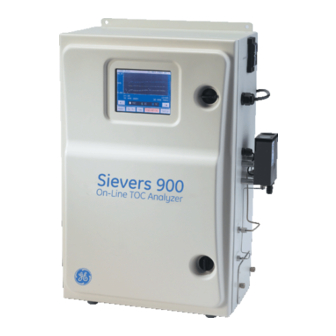
GE Sievers 900 Series Manuals
Manuals and User Guides for GE Sievers 900 Series. We have 1 GE Sievers 900 Series manual available for free PDF download: Operation And Maintenance Manual
GE Sievers 900 Series Operation And Maintenance Manual (236 pages)
on-line Total Organic Carbon Analyzers
Brand: GE
|
Category: Measuring Instruments
|
Size: 2.61 MB
Table of Contents
Advertisement
Advertisement
